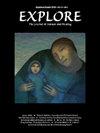Effect of auricular acupressure on comfort, pain and physiological indices after coronary artery angiography: A randomized controlled trial
IF 1.9
4区 医学
Q3 INTEGRATIVE & COMPLEMENTARY MEDICINE
引用次数: 0
Abstract
Background and Purpose
Interventions to prevent bleeding may cause discomfort after coronary angiography. This study aimed to examine the effectiveness of auricular acupressure on comfort, pain intensity, and physiological indices after coronary angiography.
Material and Method
This two-arm (1:1) randomized controlled trial was conducted at Farshchian Heart Center, Hamadan (western Iran) from April to June 2024. Eighty-four eligible patients were split into intervention (n = 42) and control (n = 42) groups. In the intervention group, Vaccaria seeds were stuck at the right ear's TF2, SF5, HX1, and AT2 points for 2 h post-angiography. The control group received no acupressure. The Numeric Rating Scale measured comfort and pain intensity, and physiological indices such as mean arterial pressure, heart rate, and peripheral oxygen saturation were measured before acupressure and at 60- and 120-min post-intervention.
Results
Analysis of 83 patients showed no significant demographic and clinical differences between groups pre-study (P > 0.05). Significant pain intensity and comfort improvements were noted in the intervention group compared to the control group at 60 and 120 min post-intervention (P < 0.05). Additionally, significant reductions in heart rate and mean arterial pressure were observed in the intervention group (P < 0.05), while no significant differences were found in arterial oxygen saturation between the intervention and control groups (P > 0.05).
Conclusion
Auricular acupressure, an easy, simple, low-cost complementary method, could help in pain management, increase comfort after coronary angiography, and positively affect mean arterial pressure and heart rate. Nurses can play a crucial role in applying these techniques, ensuring proper implementation, and educating patients about their benefits.
耳穴按压对冠状动脉造影后舒适、疼痛及生理指标的影响:一项随机对照试验。
背景与目的:冠状动脉造影后预防出血的干预措施可能引起不适。本研究旨在探讨耳穴按压对冠状动脉造影后患者舒适度、疼痛强度及生理指标的影响。材料和方法:这项双臂(1:1)随机对照试验于2024年4月至6月在伊朗西部哈马丹的Farshchian心脏中心进行。84例符合条件的患者分为干预组(n = 42)和对照组(n = 42)。干预组在造影后将牛痘种子贴于右耳TF2、SF5、HX1、AT2点2小时。对照组不进行穴位按压。数值评定量表测量舒适度和疼痛强度,并在穴位按压前和干预后60和120分钟测量生理指标,如平均动脉压、心率和外周血氧饱和度。结果:83例患者的分析显示,研究前两组患者的人口学和临床差异无统计学意义(P < 0.05)。干预组在干预后60min和120min疼痛强度和舒适度较对照组有显著改善(P < 0.05)。干预组患者心率和平均动脉压均显著降低(P < 0.05),而动脉氧饱和度与对照组无显著差异(P < 0.05)。结论:耳穴按摩是一种方便、简单、成本低的辅助方法,有助于缓解疼痛,增加冠状动脉造影后的舒适度,并对平均动脉压和心率有积极影响。护士可以发挥关键作用,应用这些技术,确保适当的实施,并教育患者关于他们的好处。
本文章由计算机程序翻译,如有差异,请以英文原文为准。
求助全文
约1分钟内获得全文
求助全文
来源期刊

Explore-The Journal of Science and Healing
医学-全科医学与补充医学
CiteScore
3.00
自引率
8.30%
发文量
179
审稿时长
25 days
期刊介绍:
EXPLORE: The Journal of Science & Healing addresses the scientific principles behind, and applications of, evidence-based healing practices from a wide variety of sources, including conventional, alternative, and cross-cultural medicine. It is an interdisciplinary journal that explores the healing arts, consciousness, spirituality, eco-environmental issues, and basic science as all these fields relate to health.
 求助内容:
求助内容: 应助结果提醒方式:
应助结果提醒方式:


